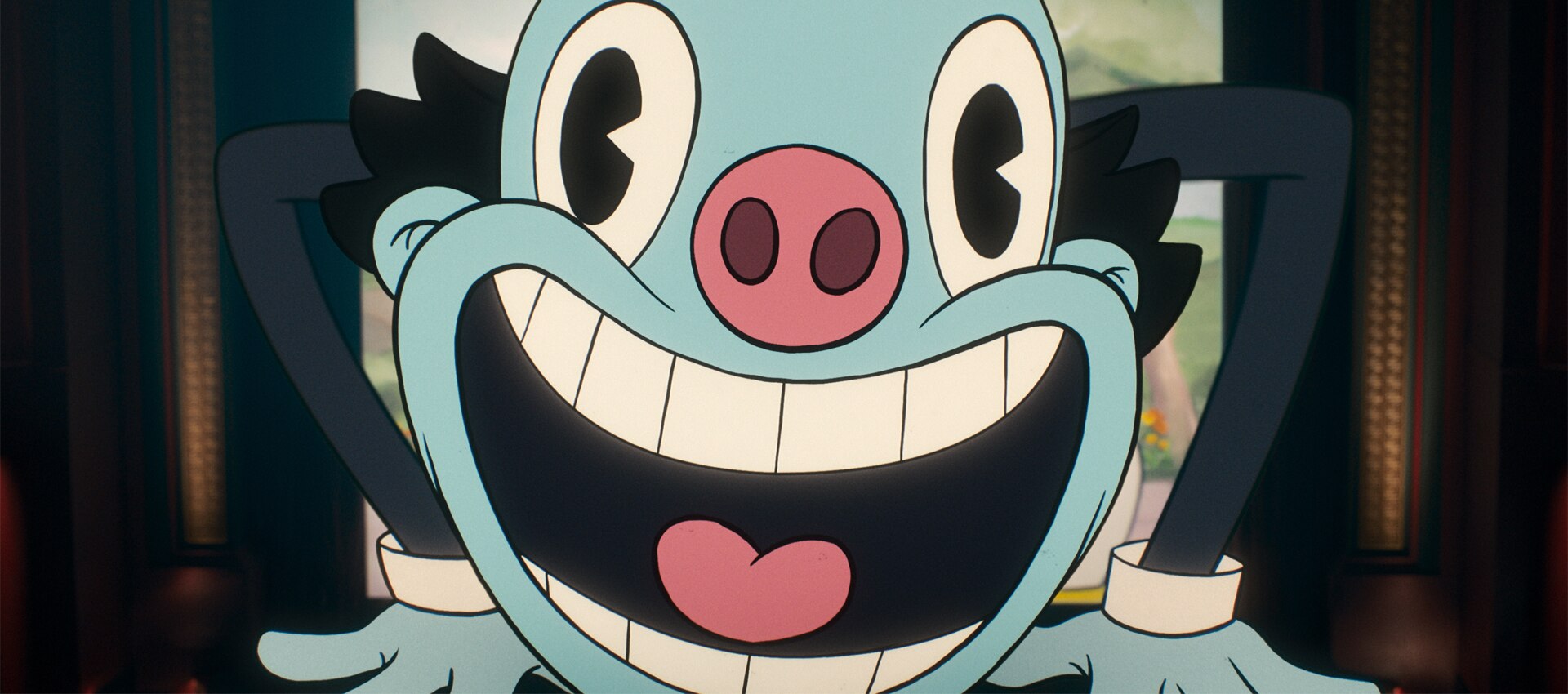
“This is proper animation,” Russell T Davies told DWM last month. “There are cheaper ways of doing animation, and then there’s this, which is the real deal. It’s so beautifully done.”
“We knew from the start that, if we wanted to do this authentically, we’d have to bite the bullet and just do it frame by frame, 25 frames a second, hand-drawn, the same way they’d have done it back in the 1930s,” says Ian, of a character Russell’s script describes as being “like a Fleischer cartoon” – in reference to Fleischer Studios’ animated shorts of the 1930s. “We could have animated it in 3D and given it a 2D look, but you can always tell when it’s not authentic. So we went proper old-school with it.”
“Though we’re not literally flicking through bits of paper,” stresses VFX producer Ashlee Turner. “We use a piece of software called TVPaint – which is essentially the same thing, but digitised.”
“It saves an awful lot of paper,” smiles Ross.
Though Framestore employs more than 3,000 people at studios all over the world, all the animation and visual effects for Lux were done in the UK, explains Ian. “As well as Mr Ring-a-Ding, our London team created all the other visuals in the episode: the sentient film strips that attack the Doctor, the film scrolling sequences, Mr Ring-a-Ding stealing the Doctor’s regeneration energy, as well as the more traditional explosions and DMPs [digital matte paintings], and turning Wales into Miami.”
Because of the specialised nature of the job, the team hired in experienced 2D animators from outside the company. “We needed to make sure we had the best people on it – people who’ve been doing this for a very long time,” says Ashlee. “We had the guys who worked on [1988 live action and animation feature] Who Framed Roger Rabbit, which is obviously very in keeping with this episode, and also Space Jam [the 1996 comedy starring Michael Jordan and Bugs Bunny]. That experience was invaluable. In total, almost 60 people that worked on this. It was a really big job for us – and an incredibly fulfilling one.”
Tim Watts and Neil Boyle were two of the “big guns” brought in to give life to the episode’s cartoon lord of misrule. “In these days where animation is often slick, and realism is the goal, it was a joy to go back to the pure animation language of Max Fleischer,” says Tim. “It was fun to embrace cartoon logic, or lack of it, unapologetically.”
Read the full feature in Doctor Who Magazine issue 616.







